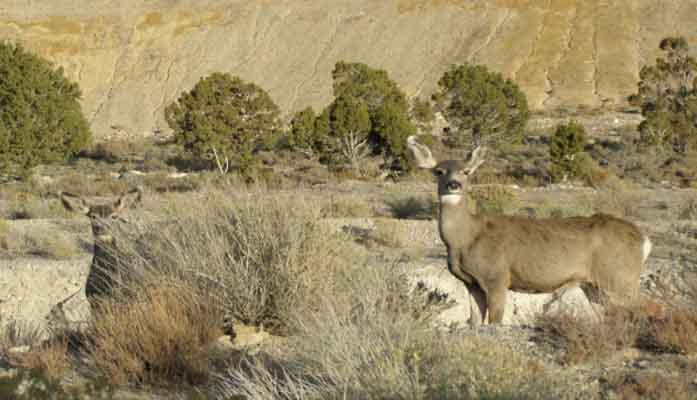
By David Briggs and Jonathan DuHamel
When large mining projects such as Rosemont are proposed, there is always concern about their impact on the local wildlife. These concerns are reflected in the myriad of regulations that govern the permitting, operation and eventual reclamation of the site; all of which are designed to minimize its impact on wildlife and the environment.
However, few realize mine sites actually attract many species, because hunting is not permitted on mine properties. These sites also have a supply of water and forage, which is accessible to the wildlife.
Working within and around mining operations throughout much of our careers, we have often seen wildlife in and around mines. For instance, desert bighorn sheep thrive within and around ASARCO’s Silver Bell copper mine, where open, rocky ledges offer security from predators. Bighorn sheep are also considered to be good indicators of land health because the species is sensitive to many human-induced environmental problems.
Freeport-McMoRan has worked closely with the Arizona Game and Fish Department in managing the large, healthy herd of Rocky Mountain bighorn sheep at Morenci; using it as source stock for successful translocations to suitable bighorn habitat in eastern and central Arizona and/or rebuilding existing populations elsewhere to desired levels. Added benefits from this program have made safer roads for both wildlife and motorists within and around the Morenci mine site.

It is not uncommon to see herds of deer grazing at the Tyrone copper mine near Silver City, New Mexico and the Robinson copper mine near Ely, Nevada. The Oquirrh Mountains west of Salt Lake City, Utah is the home for 350 to 400 elk, numerous deer and pronghorn antelope as well as mountain lion, bear, bobcat, coyote and other small predators. Much of this wildlife lives on Kennecott’s Bingham Canyon mine property, where hunting is prohibited and abundant forage and water are available.

During the early 1990s, the San Manuel copper mine was the home for kit foxes that commonly prowled the upper benches of the active open pit operation in search of prey. Ringtail cats, Arizona’s state mammal, also lived in the crawl spaces between the ceiling and roof of several mine offices at San Manuel. Also known as “miner’s cats,” the ringtails were welcomed visitors because they helped keep the area free of rodents, insects and other pests.
Abandoned underground mine workings throughout the west commonly serve as habitat for many species, including barn owls, bats and rattlesnakes. Gila monster and desert tortoise have been observed roaming reclaimed mine dumps and tailings ponds at the inactive Twin Buttes copper mine near Green Valley, Arizona.
While mining activities may be detrimental to some, many species have a remarkable ability to adapt to modified habitats that occur in and around existing and former mining operations. By minimizing its impacts on the environment, today’s mining industry ensures productive use of its properties by both humans and wildlife.
